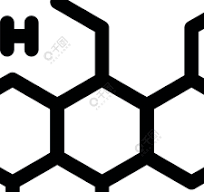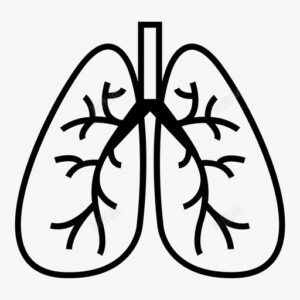Voriconazole Tablets.
Effects and efficacy: This product is mainly used to treat invasive aspergillosis, esophageal candidiasis, severe fungal infections caused by Scedosporium and Fusarium that cannot tolerate other drugs or are ineffective with other drugs, candidemia in patients with non-neutropenia, disseminated skin infections caused by Candida species, and abdominal, kidney, bladder and wound infections.
Usage and dosage: For specific usage and dosage for different populations and different diseases, please consult a doctor and refer to the drug instructions of different preparations. The oral preparation of this product should be taken 1 hour before or after a meal. The intravenous preparation of this product should be administered by intravenous drip, and the drip rate should not exceed 3 mg/kg per hour. For adults and children, whether intravenous drip or oral administration, a loading dose should be given on the first day to enable the blood drug concentration to reach a steady-state concentration as soon as possible. Adult dosage oral aa. Patients weighing ≥40kg: loading dose (first 24 hours): 1 time every 12 hours, 400 mg each time; maintenance dose (24 hours after the start of medication): 1 time every 12 hours, 200 mg each time. b. Patients with a body weight of less than 40kg: loading dose (first 24 hours): once every 12 hours, 200 mg each time; maintenance dose (24 hours after the start of medication): once every 12 hours, 100 mg each time. Intravenous drip loading dose (first 24 hours): once every 12 hours, 6 mg/kg each time; maintenance dose (24 hours after the start of medication): Candida infection, once every 12 hours, 3 mg/kg each time; Aspergillus, Scedosporium, Fusarium infection, once every 12 hours, 4 mg/kg each time. Intravenous drip and oral administration can be interchanged. Intravenous drip and oral administration can be used as sequential therapy. At this time, oral administration does not require a loading dose, so the previous intravenous drip has already made the voriconazole blood concentration reach a steady state. Intravenous drip for children aged 2-12 years: 6-12 mg/kg per day, divided into 2 times. 12 mg/kg is used on the first day, divided into 2 times; after the second day, change to 6 mg/kg, divided into 2 times. Oral: 200 mg once, twice a day. If the patient cannot tolerate the above higher dose, the maintenance dose of oral administration can be reduced by 50 mg each time, gradually reduced to 200 mg every 12 hours (100 mg every 12 hours for patients weighing less than 40 kg). If the intravenous administration cannot tolerate the dose of 4 mg/kg every 12 hours, it can be reduced to 3 mg/kg every 12 hours. For patients with mild to moderate hepatic insufficiency, the loading dose is halved. The dose does not need to be adjusted for elderly people.
Adverse reactions:
The most common adverse reactions are visual impairment, fever, rash, nausea, vomiting, diarrhea, headache, hallucinations, peripheral edema and abdominal pain. These adverse reactions are usually mild to moderate. The most common drug-related adverse events that lead to discontinuation of treatment are abnormal liver function, rash and visual impairment. Visual impairment About 30% of patients have experienced visual changes, visual enhancement, blurred vision, color vision changes and/or photophobia. Visual impairment is usually mild and rarely leads to discontinuation. Visual impairment may be related to higher blood drug concentrations and/or doses. Although the site of action of voriconazole seems to be mainly limited to the retina, its mechanism of action remains unclear. Studies have found that this product can reduce the amplitude of the retinal wave waveform. This change will no longer progress after a course of treatment of more than 29 days, and it can be completely recovered after discontinuation of the drug. The incidence of skin reaction rash is 6%, and rash, itching, and maculopapular rash are common; photosensitivity reactions of the skin, alopecia, exfoliative dermatitis, fixed drug rash, eczema, psoriasis, Stevens-Johnson syndrome, and urticaria are rare; discoid lupus erythematosus, erythema multiforme, and toxic epidermal necrolysis are occasionally seen. Most rashes are mild or moderate, and severe skin reactions such as Stevens-Johnson syndrome, toxic epidermal necrolysis syndrome, and erythema multiforme are extremely rare. Once a patient develops a rash, he must be closely observed. If the skin lesions worsen, the drug must be discontinued. The incidence of abnormal serum aminotransferase is 13.4%, and abnormal liver function tests may be related to higher blood drug concentrations and (or) doses. Most patients do not affect continued medication, or continued medication (including discontinuation) after adjusting the dose can be relieved. In patients with other serious underlying liver diseases, severe hepatotoxic reactions, including jaundice, may occasionally occur. Hepatitis, hepatic coma, or fatal liver failure are extremely rare. Other less common adverse reactions include: systemic reactions, abdominal distension, allergic reactions, anaphylactic reactions, ascites, weakness, back pain, cellulite, edema, facial edema, flank pain, flu-like symptoms, graft-versus-host reaction, granuloma, infection, bacterial infection, fungal infection, injection site pain, injection site infection/inflammation, mucosal dysfunction, multi-organ failure, pain, pelvic pain, peritonitis, sepsis, and substernal chest pain. Cardiovascular system: atrial arrhythmia, atrial fibrillation, complete atrioventricular block, bigeminy, bradycardia, bundle branch block, cardiomegaly, cardiomyopathy, cerebral hemorrhage, cerebral ischemia, cerebrovascular accident, congestive heart failure, deep thrombophlebitis, endocarditis, extrasystoles, cardiac arrest, myocardial infarction, palpitations, phlebitis, orthostatic hypotension, pulmonary embolism, QT interval prolongation, supraventricular tachycardia, syncope, thrombophlebitis, vasodilation, ventricular arrhythmia, ventricular fibrillation, ventricular tachycardia (including torsade de pointes). Digestive system: anorexia, cheilitis, cholecystitis, cholelithiasis, constipation, duodenal ulcer perforation, duodenitis, indigestion, dysphagia, esophageal ulcer, esophagitis, flatulence, gastroenteritis, gastrointestinal bleeding, increased GGT/LDH, gingivitis, glossitis, gingival bleeding, gingival hyperplasia, hematemesis, hepatic coma, liver failure, hepatitis, intestinal perforation, intestinal ulcer, hepatomegaly, melena, oral ulcer, pancreatitis, parotid enlargement, periodontitis, proctitis, pseudomembranous enterocolitis, rectal dysfunction, rectal bleeding, gastric ulcer, gastritis, and tongue enlargement. Blood and lymphocyte agranulocytosis, anemia (macrocytic anemia, megaloblastic anemia, microcytic anemia, normocytic anemia), aplastic anemia, hemolytic anemia, prolonged bleeding time, cyanosis, disseminated intravascular coagulation, ecchymosis, eosinophilia, hypervolemia, lymphadenopathy, lymphangitis, bone marrow suppression, petechiae, purpura, splenomegaly, thrombotic thrombocytopenic purpura. Endocrine adrenal insufficiency, diabetes insipidus, hyperthyroidism, hypothyroidism. Nutrition and metabolism proteinuria, increased urea nitrogen, increased creatinine phosphokinase, edema, decreased glucose tolerance, hypercalcemia, hypercholesterolemia, hyperglycemia, hyperkalemia, hypermagnesemia, hypernatremia, hyperuricemia, hypocalcemia, hypoglycemia, hyponatremia, hypophosphatemia, uremia. Musculoskeletal joint pain, arthritis, osteonecrosis jaundice, bone pain, calf cramps, myalgia, muscle weakness, myopathy, osteomalacia, osteoporosis. Nervous system abnormal dreams, acute brain syndrome, agitation, akathisia, amnesia, anxiety, ataxia, cerebral edema, coma, mental confusion, convulsions, delirium, dementia, depersonalization, depression, diplopia, encephalitis, encephalopathy, euphoria, extrapyramidal syndrome, grand mal seizures, Guillain-Barré syndrome, hypertonia, hypoesthesia, insomnia, increased intracranial pressure, decreased libido, neuralgia, neuropathy, nystagmus, eye rotation crisis, paresthesia, psychosis, drowsiness, suicidal tendencies, tremor, vertigo. Respiratory system increased cough, dyspnea, epistaxis, hemoptysis, hypoxia, pulmonary edema, pharyngitis, pleural effusion, pneumonia, respiratory dysfunction, respiratory distress syndrome, respiratory tract infection, rhinitis, sinusitis, voice changes. Alopecia of skin and appendages, angioedema, contact dermatitis, discoid lupus erythematosus, eczema, erythema multiforme, exfoliative dermatitis, mixed drug eruption, furunculosis, herpes simplex, melanosis, photosensitivity skin reaction, psoriasis, skin discoloration, skin disease, dry skin, Stevens-Johnson syndrome, sweating, toxic epidermal necrosis, urticaria. Abnormal adjustment of special senses, facial inflammation, color blindness, conjunctivitis, corneal opacity, deafness, earache, eye pain, dry eyes, keratitis, keratoconjunctivitis, mydriasis, night blindness, optic atrophy, optic neuritis, otitis externa, papilledema, retinal hemorrhage, retinitis, scleritis, loss of taste, tinnitus, uveitis, visual field defect. Urogenital system: Anuria, atrophic eggs, decreased creatinine clearance, dysmenorrhea, dysuria, epididymitis, diabetes, hemorrhagic cystitis, hematuria, hydronephrosis, impotence, renal pain, renal tubular necrosis, irregular uterine bleeding, nephritis, kidney disease, oliguria, scrotal edema, urinary incontinence, urinary retention, urinary tract infection, uterine bleeding, vaginal bleeding. Intravenous infusion-related reactions include immediate reactions like anaphylactic shock, including flushing, fever, sweating, tachycardia, chest tightness, dyspnea, syncope, nausea, itching and rash.
Drug contraindications:
Allergic to this product is prohibited. Use with caution during lactation and pregnancy.
Share:
Products
Our offers
Health Classification
Let us work together to protect precious health































